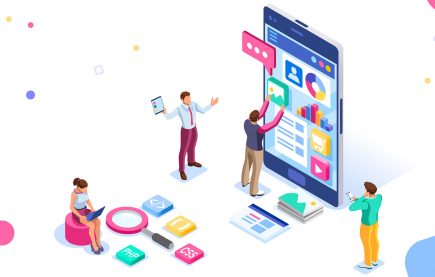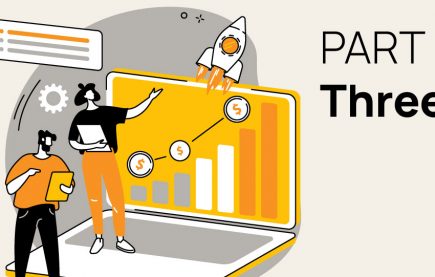
The Crucial Role of Data Visualization in Optimizing B2B Website Strategies
Data is a defining element of modern business-to-business strategy. Data has the power to support businesses even through the unprecedented times in which we live, but the insights data can provide are only as good as they are comprehensible. That’s where data visualization comes in.
Without the tools and skill sets to compile data into visuals that are easy to read and understand, your data-driven strategy efforts won’t be nearly as effective as they could be. Visualization improves customer targeting and overall messaging efforts. The right visuals can make or break your website strategy.
But building better visuals requires an understanding of data visualization’s role in a successful B2B strategy and the extent of the benefits it can offer businesses that apply it. Here’s what you should know.
The Role of Data Visualization in B2B Empowerment
First, it helps to define precisely what we mean by data visualization. Quite simply, data visualization is a representation of data in the form of an image. The easier to understand at a glance, the better this image will be in terms of communicating vital data. This can take the form of graphs, charts, infographics, tables, and more.
Data visualization is powerful because it offers at-a-glance representations of trends, correlations, and patterns that would otherwise take lengthier analysis. Visuals enable stakeholders and employees to understand a situation through quick processing and form a narrative around the insights.

In this manner, visualization also allows for humanized, data-driven storytelling. For B2B companies, this means data points connected to real human behaviors through a lens of needs and challenges. Great data visuals force us to examine the questions surrounding larger actions and formulate stories that explain relationships. In turn, business owners can respond directly to consumer needs and concerns, improving sales, lead generation, and even SEO.
The role of data visualization is one of clarity and communication. Like all quality communication, this creates understanding and empathy, which are powerful tools in any strategy toolkit.
The right approach to data visualization can lead to a host of benefits for the sales & marketing teams that integrate them.
The Benefits of Visualization
Data visualization is a powerful tool, allowing businesses to communicate complicated information in a simple form. The human brain processes images 60,000 times faster than it does text, and 90% of the information transmitted to the brain is visual. This demonstrates how data visualization can streamline communication processes to more quickly relay info.
Through comprehensible insights available across departments, optimizing a winning strategy is made simple. Empowered by data, any website strategy can boost its ability to reach target audiences and structure campaigns around real customer concerns. A host of benefits can result. These include:
- Faster and more accurate decision-making processes.
- Business meetings shortened by up to 24%.
- Group ability to come to a consensus improves 21%.
- Verbal presentations that are 17% more convincing.
With improved decision-making and time-saving patterns, marketers can improve every component of their campaign. Data insights generated from Google Analytics, for example, can drive UI and UX improvements to enhance the overall customer experience of an interface.
Data insight platforms like Google Analytics put your metrics into helpful visuals automatically so that your team can spend more time focusing on improving messaging. With data, you can see where users are bouncing off pages, losing interest in content, or failing to follow conversion paths. Then, structural and visual improvements can be made to better engage with customers.
The potential of data visualization in improving all aspects of your website is limitless. However, teams must first understand how to better apply visuals to good use.
How Businesses Can Improve Data Visualization
Data analytics are powerful tools. In lead generation, for example, analytics can help you take action and increase your sales. But creating the kinds of visuals you need to support your efforts isn’t always easy.
Here are a few methods you can employ to improve your data visualization practices:
Keep a Trained Data Specialist on Staff.
It’s the job of data scientists to wrangle big data to produce actionable insights. While the most highly accredited of these professionals come with lucrative degrees in data science, any amount of training in understanding and composing data for a larger audience can go a long way in supporting marketing efforts. Businesses that want to make the most of their accumulated data will invest in employee education or seek out trained new hires who specialize in data processing.
Keep It Focused.
In creating visuals from the data you’ve compiled into trends and insights, there is always a temptation to express everything with a single graphic. This isn’t helpful for the audience attempting to parse meaning from the graphic. Instead, keep visuals focused on the truly important metrics you want to highlight and communicate.
Add Trendlines.
While great visuals will all but speak for themselves, you can help get the point across even easier with the simple addition of trendlines in graphs and scatter points. These lines show the trajectory of patterns over time and can easily illustrate the direction in which you need to move your marketing efforts. Examine the data then include a line demonstrating trends and correlations in larger business and consumer patterns.

With trained experts in data science on staff, your data visualization efforts will be much smoother. However, simple tips like concise graphics and trendlines can help any marketing professional illustrate the narrative inherent in data analytics. Use these tools to improve your visualization practices and watch your strategy become more informed and effective.
Final Thoughts
Optimizing your available data is a valuable component of any business-to-business work. Visualization is one of the most effective ways to achieve this. Through insights that construct a larger narrative in a form easily processed and understood, your data is best served in the form of concise and clear visuals.
Understand the role these visuals play to better reap the associated benefits. Trained data professionals will help, but all employees can bring greater value to a website strategy with a little education on how to make the most of representing business insights.



